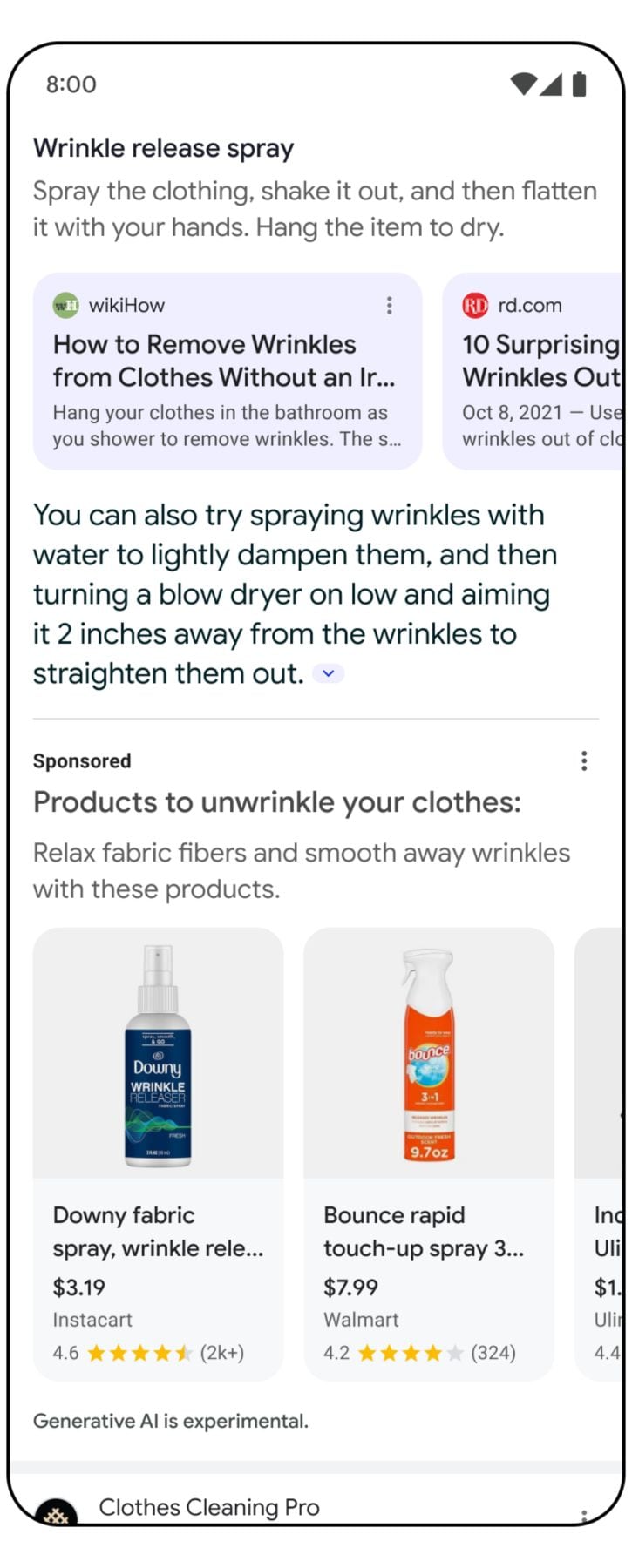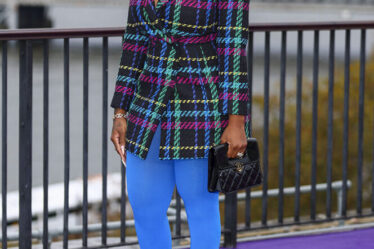
Last week, while people online buzzed about the mishaps in Google’s new AI-generated search results, like its suggestion to add glue to tomato sauce on pizza to keep the cheese from sliding off, the tech giant revealed some other notable AI news.
Those AI-generated results will soon include ads, the company said. It also unveiled a number of other AI features.
A new ability in its Product Studio, which can generate a realistic background behind a standard product shot, now allows brands to tailor the result to their brand aesthetic by letting them upload a reference image representing their style. One of three new ad formats integrates Google’s AI-powered virtual try-on into ads for apparel, giving shoppers a glimpse of what a product would look like on different body types without the brand needing to photograph its item on different models. (For now it’s only available in ads for men’s and women’s tops.) Another uses AI to create spinning 360-degree views of a product from a set of still images.
Since generative AI’s abilities captured widespread attention, Google and numerous other tech companies from Meta to Salesforce have raced to bundle AI of all kinds into more of their products. The audience for these features isn’t just the general internet-using public. It’s also marketers willing to spend on tools that make it easier to create ads that grab shoppers.
Tech companies have good reason to appeal to them. Their money fuels much of the industry. In Google’s most recent quarter, about 77 percent of its revenue came from companies paying to advertise on its properties, including YouTube.
The big money in AI might even be in convincing brands and retailers to use AI tools that can help them better sell their products.
Last week, Salesforce similarly expanded the capabilities of its conversational AI assistant, Einstein, to let marketers generate briefs, content and campaign emails. TikTok, meanwhile, announced an automation feature where advertisers input their content, budget and goals and the platform will automatically choose the best asset and serve it to the target audience at the best moment.
Earlier in the month, Meta announced its own enhancements to its generative-AI tools for advertisers, first introduced last October. The company described in a release how a coffee-bean business with an ad depicting a steaming cup of coffee can now use its generative AI to produce variations on the ad, “including scenery that embodies a lush and idyllic farm, and also provide adjustments to the coffee cup to offer you more creative options.” In Meta’s most recent quarter, roughly 98 percent of its revenue came from advertising.
While generative AI has its shortcomings — like its inability to sort fact from fiction when answering a question, leading to fears it’s been overhyped into a bubble waiting to burst — the technology is already adept at simple creative tasks, such as producing backgrounds for campaign imagery. For that reason alone it seems set to have an impact on the advertising business and is raising concerns about how it could affect creatives in the industry. In one 2023 survey by Gartner, 63 percent of marketing leaders intend to invest in generative AI over the next two years.
Those already announcing plans include some of the biggest names in the business. Publicis, one of the world’s largest advertising and communications agencies, has pledged to invest €300 million euros ($327 million) in AI over the next three years. Another advertising giant, WPP, announced a partnership with Google Cloud in April that it said would allow its clients “to create brand- and product-specific content using gen AI, to gain deeper insights into their target audiences, to accurately predict and explain content effectiveness, and to optimise campaigns with ongoing adaptive processes.”
Of course, brands and retailers need to want to use these tools for them to have an impact. The early indications, according to a new Bain & Company report, are that they’re at least beginning to.
“Retailers are likely to have experimented already with using generative AI to enhance and streamline their marketing efforts—with promising results,” it stated.
The firm estimated that uses of generative AI for marketing tasks from translating or repurposing content to creating dynamic, personalised landing pages could boost marketing productivity by as much as 40 percent.
It’s little wonder retailers would be eager to at least give the technology a try. They’re battling high costs to acquire shoppers online and the demands of producing content for several different channels as they try to break through the noise and catch shoppers’ attention for even a moment. (The pressures are contributing to the growing importance of loyalty programmes that can retain existing customers and drive repeat purchases.)
Whether generative AI can deliver on all its promises remains to be seen. In the meantime, it looks set to be a target for spending by marketers seeking any advantage they can.



